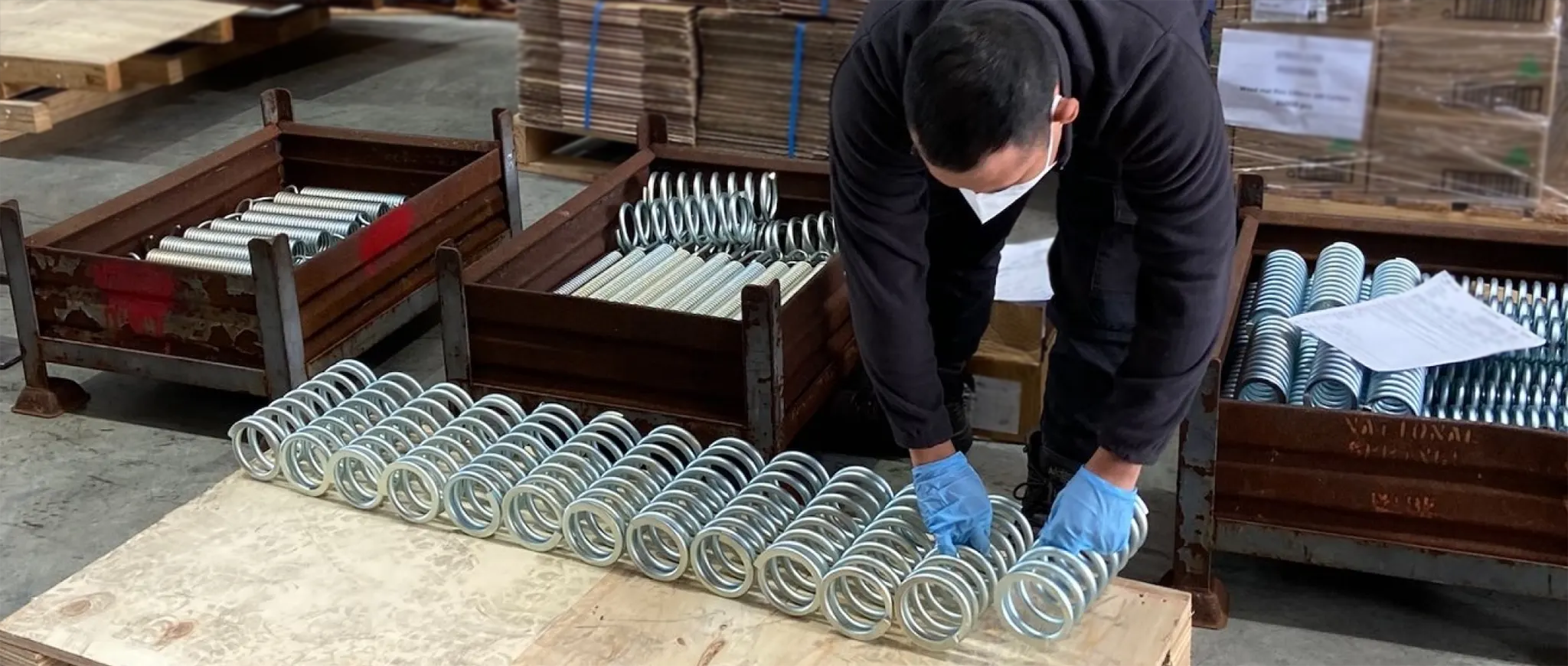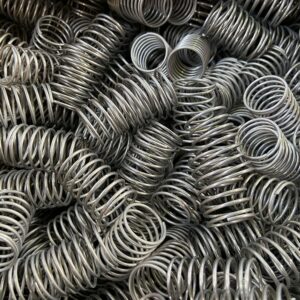Compression Springs

Compression springs are a type of coil spring designed to operate with a compression load, so the spring gets shorter as the load is applied to it.
We can help you design your spring to suit its application and decide your required end type, from having the wind open to having the end accurately closed and ground on our CNC grinding machine.
By using industry-leading design technology and years of professional experience we can design a quality NZ-made compression spring to suit your exact requirements.
The Manufacturing Process of Compression Springs
The manufacturing process of compression springs in New Zealand is a complex and precise process that requires specialized equipment and expertise.
Compression Spring Materials
The process begins with the selection of the appropriate material for the spring. The material needs to be selected based on the spring’s application and performance requirements. Common materials used in compression spring production include various steel alloys.
Wire diameter range for compression springs
Stainless Steel
0.20mm and above
Pre-galvanized
0.63mm and above
Hard Bright
0.315mm and above
Mild Steel
0.315mm and above
Compression Spring Design & Manufacturing Process
Once the material has been selected, the next step is to design the spring. The design process involves calculating the required dimensions of the spring based on the application and the desired performance characteristics. The design process also takes into account the material properties such as yield strength, modulus of elasticity, and fatigue life.
Our product designers utilise Advanced Spring Design (ASD), which is a state-of-the-art drafting program that allows accurate drafting and specification analysis of the required compression spring.
The critical criteria for the compression spring are entered into the intelligent system, and the optimal design is automatically configured, together with all specification details. This information is then passed through to one of our CNC machines for an absolutely accurate reproduction of the spring design.
Once the spring has been coiled, it is heat-treated/stress releaved to improve its strength and durability. The heat treatment process involves heating the spring to a specific temperature and soaked for a specific amount of time. The spring may also be coated after the coiling process in a wide range of coatings, nickel or zinc plating silver/blue or gold, powder coating or painted finishes.
Types of Compression Springs
There are several different types of compression springs, each with its own unique characteristics and performance capabilities. The most common types of compression springs include:
- Barrel Springs- Barrel springs are conical in shape and have a uniform diameter throughout the length of the spring. They are often used in applications where the spring needs to provide a constant force over an extended range of motion.
- Conical Springs- Conical springs are tapered in shape and have a decreasing diameter from one end of the spring to the other. They are often used in applications where the spring needs to provide a varying force over a range of motion.
- Hourglass Springs- Hourglass springs are tapered in shape and have a narrow middle section with larger-diameter ends. They are often used in applications where the spring needs to provide a varying force over a range of motion.
- Straight Springs- Straight springs are the simplest type of compression spring and have a uniform diameter throughout the length of the spring. They are often used in applications where the spring needs to provide a constant force over a short range of motion.



